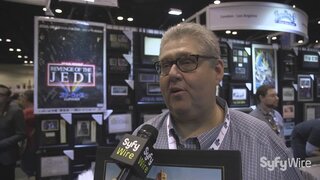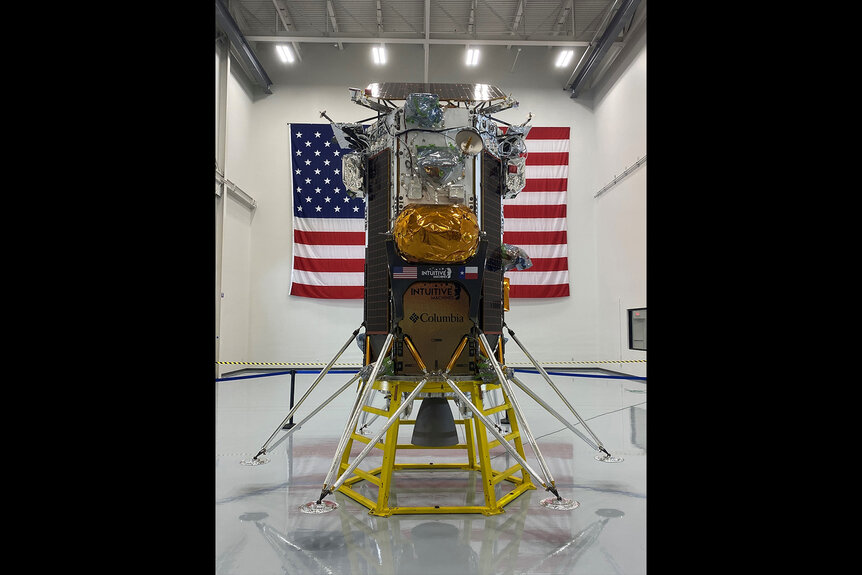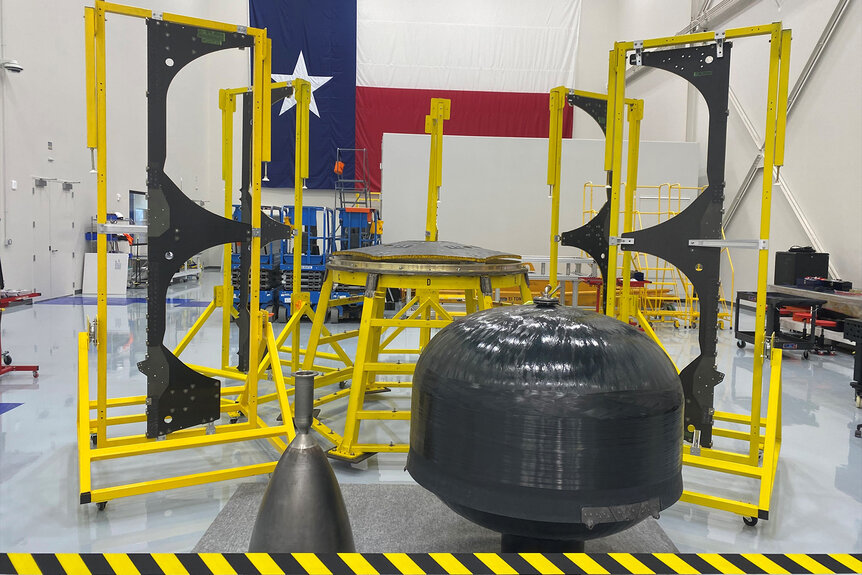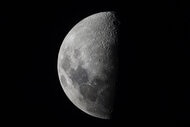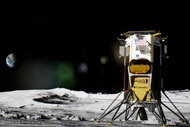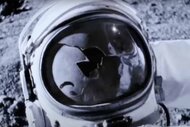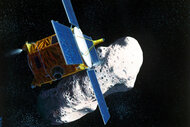Create a free profile to get unlimited access to exclusive videos, sweepstakes, and more!
SpaceX Temporarily Delays Launch of Intuitive Machines' Nova-C Launcher Due to Fueling Problem
A fueling problem caused a temporary launch delay. IM-1 is now targeting a February 15, 2024 launch.
On December 14, 1972, astronauts Eugene Cernan and Harrison Schmitt climbed inside their lunar module and lifted off from the surface of the Moon. A few days later, they splashed down in the ocean on Earth, and humanity’s time on the Moon was over. It has been more than 50 years since, and we haven’t gone back. The official understanding (and the probably correct one) is that a combination of dwindling will and budgetary constraints have been the main reasons slowing humanity’s crewed exploration of the solar system.
The found footage film Apollo 18 (streaming now on Peacock) offered an alternative explanation. Two years after Apollo 17, the crew of Apollo 18 were informed that their mission was back on, only it had become a top secret mission to deliver a classified DoD payload to the Moon’s South Pole. What they found there caused the mission to remain a secret for decades, and it’s the real reason we never went back. Bum, bum, BUM!
Moon horrors aside, real-world astronauts are headed back to lunar orbit and then to the lunar surface on NASA’s upcoming Artemis II and III missions. Before that, the commercial space company Intuitive Machines is poised to put their Odysseus Nova-C lander on the Moon’s South Pole. If successful, it will mark the first soft landing by the United States since Apollo 17. Or was it 18?
For More on the Moon:
The Moon Is Shrinking, Triggering Fault Lines and Moonquakes
NASA Laser Hit an Oreo-Sized Mirror on the Moon from Orbit
Why NASA Is Postponing Its Next Crewed Moon Missions
IM-1 Launch Delayed, Citing Cold Temperatures
Intuitive Machines has been awarded $77 million under NASA’s Commercial Lunar Payload Services (CLPS) program for three lunar landing missions. Each of those missions will use the company’s Nova-C landing craft, a tall cylindrical craft capable of ferrying roughly 100 kilograms of payload to the Moon. It’s launching aboard a SpaceX Falcon 9 rocket from Cape Canaveral in the early hours of February 15, 2024. The mission was originally planned for November 2023, but things have moved a couple of times, launch windows and environmental factors being what they are.
Most recently, the launch was pushed a day from the early morning of February 14 to February 15, on account of cold temperatures. The Nova-C uses methane for fuel which has to be loaded just prior to launch, and that has to be done under the right conditions. SpaceX postponed the launch due to “off-nominal methane temperatures,” according to NASA. At the time of writing, the IM-1 mission is targeting a 1:05 AM EST launch window, the morning of February 15. NASA will begin a live broadcast at 12:20 AM, about 45 minutes prior to launch. The delays and hurdles on the way to launch are frustrating but not atypical of space exploration. And they are appropriate, given the landers namesake, Odysseus, who famously endured countless hurdles on his journey home.
RELATED: CONFIRMED: Water Ice on the Moon!
Also, like Odysseus, IM-1 has taken a meandering path. It was originally headed for somewhere closer to the Moon’s equator before NASA asked for a change in venue. The ongoing Artemis program is targeting the Moon’s South Pole, largely because we believe there to be large stores of water ice in permanently shadowed craters there. NASA asked if IM-1 could head south instead, in advance of the looming crewed missions.
“We’re going to the South Pole region, near a crater called Malapert A. Fairly close to the South Pole, a very different place than what’s been visited before. Exciting place to visit scientifically, payloads should do some really interesting things," Ben Bussey, Chief Scientist for Intuitive Machines, told SYFY WIRE. "That actually came from NASA, we initially were not going to the South Pole and NASA asked if we would be able to do that. We looked at the capability, the lander design and realized we could make that happen. You’d have to talk to NASA about why they asked, but probably related to Artemis. We’re not going where the crew could potentially go but we’re going nearby, so the data will still be useful. We’re testing some of the technologies that could then feed into Artemis as well."
The IM-1 Mission and the Future of the Nova-C Lander
IM-1 is loaded up with a dozen or so payloads, six of which are NASA experiments. The Stereo Cameras for Lunar Plume-Surface Studies (SCALPSS) payload is made up of an array of cameras positioned around the base of Odysseus. They will watch as the lander makes its final descent, studying the way the engines interact with the lunar surface. IM-1 is also carrying a payload called ROLSES, which will help set the stage for future radio astronomy observations from the Moon.
“We often talk about science of the Moon, this is science from the Moon," Bussey said. “We have ROLSES which is a radio science experiment, it will deploy antennas and get information about plasma which has relevance to crewed missions. A lot of what we’re doing I see as precursors to larger versions. For instance radio science, the far side of the Moon never sees the Earth. It’s unique in the solar system that it’s so quiet, we’re very noisy. There are designs for a radio science experiment on the far side of the Moon that could measure much quieter sensitive signals and ROLSES is a good precursor to that.”
The Sun only hits any given point on the Moon for two weeks at a time, then it sets and you get two weeks of night time. In order for Odysseus to maximize its mission time, it needs to land right when the Sun is rising on its destination and then hang out for the entire two-week period of daylight. That means the craft has to take off within a narrow launch window, or else wait for the next month.
RELATED: A new era in space flight: NASA launches Artemis 1, our first step in returning to the moon
“You land at the sliver, and you live the whole time, that’s what we’re trying to do. It’s the South Pole, and the South Pole is tricky. The shadows are awful and it takes a lot more gas to shift your inclination like that. It is harder, that’s why people haven’t done it,” Jack Fisher, VP of Production and Operations at Intuitive Machines, told SYFY WIRE. “As you get to the poles, the trick is finding a location where the Sun and the Earth are always up at the same time. Where can we find a good safe landing site where the instruments can do what they want to do but we still get enough days of Sun and Earth visibility? That’s an interesting spinning plate game.”
While IM-1 still has the Moon out in front of it, Intuitive Machines is already hard at work on the next mission. It will be a similar lander but with different payloads and a few new capabilities. Perhaps the most exciting is a smaller, independent robot buddy named Hopper. Hopper’s job will be to jump away from the lander and down into Permanently Shadowed Regions (PSRs) inside craters, then jump back out again.
“Hopper is basically a miniature version of the lander. It flies off of IM-2, goes into permanently shadowed regions, and then flies out. He’s got a little 4G LTE antenna sticking out the top, he’s like R2-D2. He’s got a sensor that will look for water ice in the PSR. He’s pretty much finished, we’re printing the legs right now. He’s going to be super fun,” Fisher said.
Before any of that can happen, they need to get IM-1 on the Moon.
Journey to the Moon’s South Pole yourself in Apollo 18, streaming now on Peacock.



